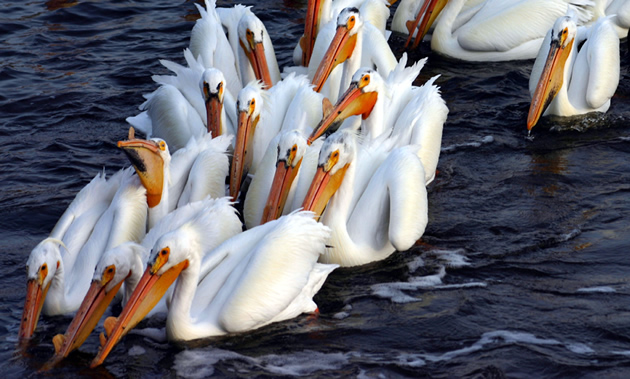Where the Prairies come alive
The Last Mountain Lake Wildlife Area in Saskatchewan is a wonderful place to discover nature and a variety of bird life

Prairie wildlife, natural grassland and exceptional bird watching opportunities—Saskatchewan comes alive at Last Mountain Lake National Wildlife Area and Migratory Bird Sanctuary. The protected area was created in 1887 and has been an important ecological area in the province ever since.
“We are part of the central flyway of North America,” said Kerry Hecker, wildlife area manager at Last Mountain Lake. “Birds that nest up in the Arctic funnel through central North America. It’s like an hourglass—they come narrowly through the Prairies and then they spread out again into the southern United States. Some even go into Mexico and South America. We’re the centre of that hourglass, that little constriction, so . . . the Last Mountain Lake National Wildlife area is a particularly good spot for the birds.”
Birds of all feathers
Over 280 species of birds have been recorded at Last Mountain Lake Migratory Bird Sanctuary, which is set inside the full wildlife area. Make sure to be observant, especially during the breeding season in May and June. There could be nests underfoot, even along designated trails. Between 100 and 150 species of birds actually breed at Last Mountain Lake, making spring a great time to visit. Autumn is also a wonderful time of year when visitors can observe migrations. Geese provide an amazing spectacle and lucky bird watchers could catch a glimpse of the whooping crane, one of North America’s most endangered species with only about 300 remaining in Canada.
Last Mountain Lake Wildlife Area is open from dawn until dusk with free admission and is an hour south of Watrous and Manitou Springs. Hecker recommends first stopping by the information kiosk or administration building to pick up a trail map. From this point you might like to check out the grassland and wetland walking trails. Each is about two kilometres long—the grassland trail should take about an hour if you take your time, while you should leave an hour and a half for the wetland trail.
“On the grassland trail you’re on a peninsula going down into the lake itself among the reed beds and some of the marsh nesting areas,” said Hecker. “You’re on natural grassland up there. You’ll see all those cool flowers and neat grasses. You might have a chance to see the grassland songbirds. There’s a little aspen bluff along one side, so you might see a little more shrubby tree-dependent birds as well—flycatchers and such. And the trail has a very good view. It’s a little rise of land so you can see a little further around the surrounding area.
“For the wetland trail we’ve got a floating boardwalk, so you can actually walk out into the water, into the side of the reed bed, and there’s a blind where you can sit down and see if there’s any interesting things going on out in the reeds.”
Bring your binoculars
While out walking you’re likely to see dabbling ducks, mallards and blue-wing teals. There are grassland nesting songbirds as well, such as savannah sparrows, horned larks and meadowlarks. The Last Mountain Lake Wildlife Area hosts nine species of endangered birds, but they’re rare and challenging to spot.
If plants interest you more, check out the prairie wildflowers and natural grasslands. There is also lots of other wildlife from porcupines to deer. There have even been moose and elk in the area over the last few years. Hunters and fishermen are welcome in the area.
“You never quite know what you’re going to see here on any given day. You can’t guarantee anything—wildlife doesn’t behave,” said Hecker with a laugh. “I think (I mostly enjoy) being out in the middle of nowhere. It’s as much in the middle of nowhere as you can be in agricultural Saskatchewan. We’re out here with nature and not a huge amount of human influence and it’s probably one of the really neat little places in Canada like that.”






